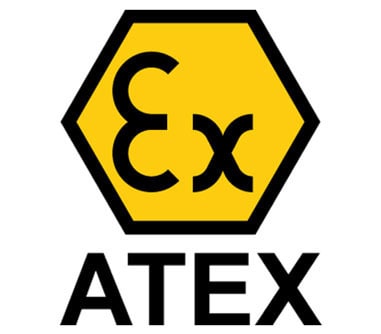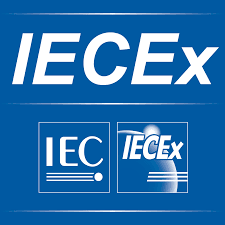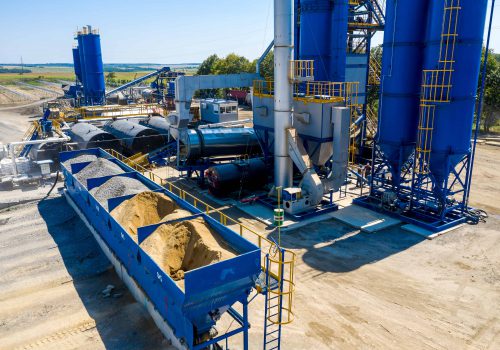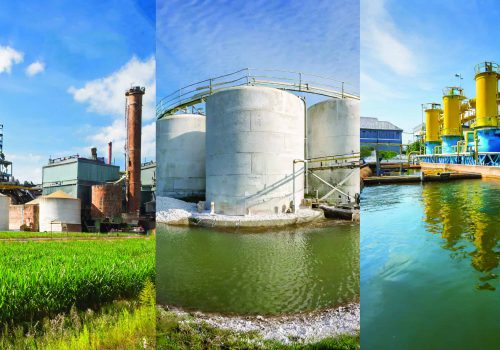Introduction
One of the largest areas of innovation and R&D in the automobile industry is the engine oil condition monitoring. Rapid development of engine oil condition monitoring systems has taken place to determine engine lubricant degradation level in reducing unnecessary power loss and maintenance cost. There exists a critical need to determine oil quality on demand and provide complementary oil condition information. There are several motivational benefits from cost, environmental and logistical perspectives to improve the means of lubricant monitoring and to make it extremely reliable.

Application
Engine lubricants are complex and highly engineered fluids which perform a variety of protective and functional jobs – provide hydrodynamic film between moving components, including heat dispensing, suspending contaminants, acid neutralization, and preventing corrosion and so on. Lubricating oil in IC engines is exposed to various strains depending on the fuel quality, ambient conditions and the operating parameters which change its physical and chemical properties and ultimately degrade. In order to avoid an engine failure, the oil must be changed before it loses its protective properties. At the same time, an unnecessary oil change is unwanted because of environmental and economical reasons. In order to schedule oil change interval optimally, the actual physical and chemical condition of the oil needs to be monitored. The engine oil condition provides insight into the actual state of the engine and thus supports the early detection of possible engine failures.
Viscosity is considered as one of the most important parameters for the oil’s lubrication properties and its inclusion into the on-line monitoring systems has been recommended by several studies. Commonly chemical oil deterioration (e.g. due to oxidation) is associated with an increase in viscosity whereas mechanical wear (“cracking” of organic chain molecules) and fuel dilution lead to a decrease in viscosity. Therefore, knowledge of viscosity in real time provides significant benefit to measure aging of oil, ingress of contaminants during commercial operations and prevent incipient mechanical failure due to loss of oil lubrication properties.
Challenges with traditional oil monitoring techniques
In common practice, engine oil is changed at a constant time or mileage interval according to the recommendation of the lubricant oil manufacturers or OEMs. This oil changing method is not based on the real oil condition of the specific engine and may be replaced before reaching the end of its useful life or after its useful life is exceeded. This is uneconomical, as it will be a waste, and also deteriorate the engine.

In some lubricant monitoring techniques, such flexible oil drain intervals are determined by continuously monitoring characteristic engine and driving parameters (such as, e.g.. driven distance, speed, and oil temperature). The proper oil drain interval is then estimated by corresponding algorithms processing these parameters. These algorithms are developed empirically by means of extensive field studies. The algorithms basically use said parameters to estimate the oil condition in an indirect way. These techniques do not monitor the physical properties of the lubricant directly, therefore critical problems such as fuel contamination can be overlooked. Excessive lubricant contamination may lead to dramatic changes in lubricant properties, preventing the lubricant from performing its required functions. However, ideally the evaluation of the oil condition should solely be based on parameters measured directly in the oil itself.
Conventional mechanical and electro-mechanical viscometers designed primarily for laboratory measurements are difficult to integrate into the control and monitoring environment. The current methodology of testing in off-site labs in not optimal and expensive due to the logistical challenges of shipping and high fixed costs. The complex changes taking place inside an engine or compressor often cannot be determined from a routine oil sample because the data represented by such a sample simply reflects a snapshot of the oil’s condition at the time the sample is taken and the conventional instrumentation may be affected by shear rate, temperature and other variables.
Why is real-time engine oil viscosity monitoring important?
There are several motivational benefits from cost, environmental, and logistical perspectives to on-line real time engine oil viscosity monitoring. Key points are as follows:
Economical advantages: Majority of oil samples analysed in off-site laboratories are deemed normal. On-line monitoring of the engine oil/lubricants condition in real-time yields increased oil drain intervals adapted to the actual state of the engine oil thus resulting in cost savings.
Logistical advantages: On line oil viscosity analysis would reduce the number of samples sent to off-site laboratories, and the involved costs. Continuous oil condition outputs from onsite analyses would also reduce shipping labour/costs and sampling error.
Faster response times: In-situ oil viscosity analysis would reduce/eliminate the delay between sampling and receiving a response from the laboratory.
Accurate information: The true value of real-time data trending is that it provides a window into the transient stresses on a lubricating system as a machine undergoes various operating and duty cycles. Real time viscosity monitoring techniques quantify changes in the physical properties of the lubricant and give a more accurate reading of the oil condition, thereby reducing oil consumption and providing the means to diagnose component failure.
Reduced failures and better operations: Knowledge of viscosity in real time provides significant benefit to measure aging of oil, ingress of contaminants during commercial operations and prevent incipient mechanical failure due to loss of oil lubrication properties. Transient changes due to fuel combustion or refrigerant interaction, as loading and environmental conditions change, can be captured, allowing oil viscosity data to be evaluated throughout its operational life span.
Environment: Utilisation of oil can be maximised through on-line monitoring systems, thus resulting in reduced wastage which is good for the environment.
Optimise engine design:
- Compared to the indirect approach of using said parameters to estimate oil condition by deploying algorithms, real time engine oil viscosity monitoring would yield a true physical picture of the oil condition allowing the detection of possible approaching engine failures or abnormal states. This would enable evaluation of oil condition solely based on the physical properties of the oil itself.
- With real-time viscosity monitoring, the effects of engine design on the oil’s viscosity can be measured directly, providing more data to engine designers and lubricant manufacturers.
- Fuel system design for both diesel and gasoline engines can also benefit greatly from engine oil viscosity measurement. Some of the most important fuel economy parameters are difficult and expensive to measure. However, fuel dilution and combustion by-products formation can be easily observed by monitoring changes in the oil’s viscosity in real-time.
- Real time oil condition monitoring can quantify how lubricant properties change with engine operating time, contamination levels and identify potential causes for any detected changes in oil properties.
Rheonics' Solutions
Automated, real time in-line viscosity measurement is critical to oil condition monitoring. Rheonics offers the following solutions, based on a balanced torsional resonator, for process control and optimisation in the real time engine oil condition monitoring:
- In-line Viscosity measurements: Rheonics’ SRV is a is a wide range, in-line viscosity measurement device with inbuilt fluid temperature measurement and is capable of detecting viscosity changes within any process stream in real time.
- In-line Viscosity and Density measurements: Rheonics’ SRD is an in-line simultaneous density and viscosity measurement instrument with inbuilt fluid temperature measurement. If density measurement is important for your operations, SRD is the best sensor to cater to your needs, with operational capabilities similar to the SRV along with accurate density measurements.
Automated in-line viscosity measurement through SRV or an SRD eliminates the variations in sample taking and lab techniques which are used for viscosity measurement by the traditional methods. The sensor is located in-line so that it continuously measures the lubricant viscosity (and density in case of SRD). Using an SRV/SRD in real time oil condition monitoring can improve productivity and increase profit margins. Both the sensors have a compact form factor for simple OEM and retrofit installation. They require no maintenance or re-configurations. Both the sensors offer accurate, repeatable results no matter how or where they are mounted, without any need for special chambers, rubber seals or mechanical protection. Using no consumables, SRV and SRD are extremely easy to operate.
Compact form factor, no moving parts and require no maintenance
Rheonics’ SRV and SRD have a very small form factor for simple OEM and retrofit installation. They enable easy integration in any process stream. They are easy to clean and require no maintenance or re-configurations. They have a small footprint enabling Inline installation in any process line, avoiding any additional space or adapter requirement.
High stability and insensitive to mounting conditions: Any configuration possible

Rheonics SRV and SRD use unique patented co-axial resonator, in which two ends of the sensors twist in opposite directions, cancelling out reaction torques on their mounting and hence making them completely insensitive to mounting conditions and ink flow rates. These sensors can easily cope up with regular relocation. Sensor element sits directly in the fluid, with no special housing or protective cage required.
Instant accurate readouts on oil conditions – Complete system overview and predictive control

Rheonics’ software is powerful, intuitive and convenient to use. Real-time ink viscosity can be monitored on a computer. Multiple sensors are managed from a single dashboard spread across the factory floor. No effect of pressure pulsation from pumping on sensor operation or measurement accuracy. Unaffected by shock, vibrations or flow conditions.
Easy installation and no reconfigurations/recalibrations needed
Replace sensors without replacing or reprogramming electronics, drop-in replacements for both sensor and electronics without any firmware updates or calibration coefficient changes. Easy mounting. Screws into ¾” NPT thread in ink line fitting. No chambers, O-ring seals or gaskets. Easily removed for cleaning or inspection. SRV available with flange and tri-clamp connection for easy mounting and dis-mounting.
Low power consumption
24V DC power supply with less than 0.1 A current draw during normal operation
Fast response time and temperature compensated viscosity
Ultra-fast and robust electronics, combined with comprehensive computational models, make Rheonics devices one of the fastest and most accurate in the industry. SRV and SRD give real time, accurate viscosity (and density for SRD) measurements every second and are not affected by flow rate variations!
Wide operational capabilities
Rheonics’ instruments are built to make measurements in the most challenging conditions. SRV has the widest operational range in the market for inline process viscometer:
- Pressure range up to 5000 psi
- Temperature range from -40 up to 200°C
- Viscosity range: 0.5 cP up to 50,000 cP
SRD: Single instrument, triple function – Viscosity, Temperature and Density
Rheonics’ SRD is a unique product that replaces three different instruments for viscosity, density and temperature measurements. It eliminates the difficulty of co-locating three different instruments and delivers extremely accurate and repeatable measurements in harshest of conditions.
Achieve accurate oil quality information through direct measurements, cut down costs and enhance productivity
Integrate an SRV/SRD in the process line to schedule oil change intervals optimally and achieve significant cost savings. Compared to the indirect approach of using algorithms to predict the real state, oil viscosity measurements would yield a true physical picture of the oil condition allowing the detection of possible approaching engine failures or abnormal states. And at the end of it all, it contributes to a better bottom line and a better environment!
Superior sensor design and technology
Sophisticated, patented 3rd generation electronics drive these sensors and evaluate their response. SRV and SRD are available with industry standard process connections like ¾” NPT and 1” Tri-clamp allowing operators to replace an existing temperature sensor in their process line with SRV/SRD giving highly valuable and actionable process fluid information like viscosity besides an accurate measurement of temperature using an in-build Pt1000 (DIN EN 60751 Class AA, A, B available).
Electronics built to fit your needs
Available in both an explosion-proof transmitter housing and a small-form factor DIN rail mount, the sensor electronics enables easy integration into process pipelines and inside equipment cabinets of machines.


Easy to integrate
Multiple Analog and digital communication methods implemented in the sensor electronics makes connecting to industrial PLC and control systems straightforward and simple.
ATEX & IECEx Compliance
Rheonics offers intrinsically safe sensors certified by ATEX and IECEx for use in hazardous environments. These sensors comply with the essential health and safety requirements relating to the design and construction of equipment and protective systems intended for use in potentially explosive atmospheres.
The intrinsically safe and explosion proof certifications held by Rheonics also allows for customization of an existing sensor, allowing our customers to avoid the time and costs associated with identifying and testing an alternative. Custom sensors can be provided for applications that require one unit up to thousands of units; with lead-times of weeks versus months.


Implementation

Directly install the sensor to your process stream to do real time viscosity and density measurements. No bypass line is required: the sensor can be immersed in-line, flow rate and vibrations do not affect the measurement stability and accuracy. Optimize decision making process by providing repeated, consecutive, and consistent tests on the fluid.

Rheonics Instrument Selection
Rheonics designs, manufactures and markets innovative fluid sensing and monitoring systems. Precision built in Switzerland, Rheonics’ in-line viscometers has the sensitivity demanded by the application and the reliability needed to survive in a harsh operating environment. Stable results – even under adverse flow conditions. No effect of pressure drop or flow rate. It is equally well suited to quality control measurements in the laboratory.
Suggested product(s) for the Application
• Wide viscosity range – monitor the complete process
• Repeatable measurements in both newtonian and non-newtonian fluids, single phase and multi-phase fluids
• All metal (316L Stainless Steel) construction
• Built in fluid temperature measurement
• Compact form-factor for simple installation in existing process lines
• Easy to clean, no maintenance or re-configurations needed
• Single instrument for process density, viscosity and temperature measurement
• Repeatable measurements in both newtonian and non-newtonian fluids, single phase and multi-phase fluids
• All metal (316L Stainless Steel) construction
• Built in fluid temperature measurement
• Compact form-factor for simple installation in existing pipes
• Easy to clean, no maintenance or re-configurations needed





